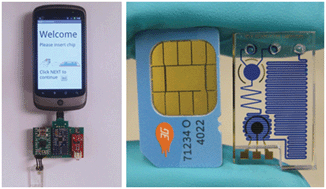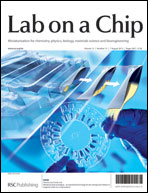Rapid electrochemical detection on a mobile phone
Abstract
We present a compact mobile phone platform for rapid, quantitative biomolecular detection. This system consists of an embedded circuit for signal processing and data analysis, and disposable microfluidic chips for fluidic handling and biosensing. Capillary flow is employed for sample loading, processing, and pumping to enhance operational portability and simplicity. Graphical step-by-step instructions displayed on the phone assists the operator through the detection process. After the completion of each measurement, the results are displayed on the screen for immediate assessment and the data is automatically saved to the phone's memory for future analysis and transmission. Validation of this device was carried out by detecting Plasmodium falciparum histidine-rich


 Please wait while we load your content...
Please wait while we load your content...